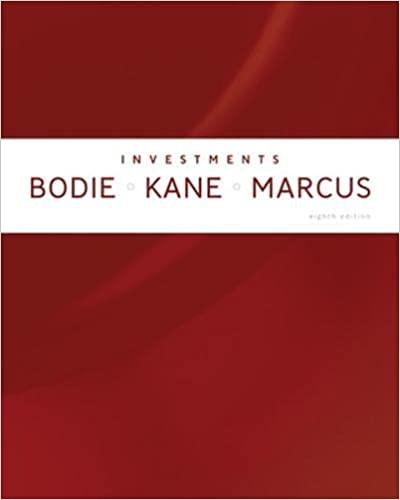22. Consider a 6-month expiration European call option with exercise price $105. The underlying stock sells for
Question:
22. Consider a 6-month expiration European call option with exercise price $105. The underlying stock sells for $100 a share and pays no dividends. The risk-free rate is 5%. What is the implied volatility of the option if the option currently sells for $8? Use Spreadsheet 21.1 (available at www.mhhe.com/bkm; link to Chapter 21 material) to answer this question.
a. Go to the Tools menu of the spreadsheet and select Goal Seek. The dialog box will ask you for three pieces of information. In that dialog box, you should set cell E6 to value 8 by changing cell B2. In other words, you ask the spreadsheet to find the value of standard deviation (which appears in cell B2) that forces the value of the option (in cell E6) equal to $8. Then click OK, and you should find that the call is now worth $8, and the entry for standard deviation has been changed to a level consistent with this value. This is the call’s implied standard deviation at a price of $8.
b. What happens to implied volatility if the option is selling at $9? Why has implied volatility increased?
c. What happens to implied volatility if the option price is unchanged at $8, but option expiration is lower, say only 4 months? Why?
d. What happens to implied volatility if the option price is unchanged at $8, but the exercise price is lower, say, only $100? Why?
e. What happens to implied volatility if the option price is unchanged at $8, but the stock price is lower, say, only $98? Why?
Step by Step Answer:






